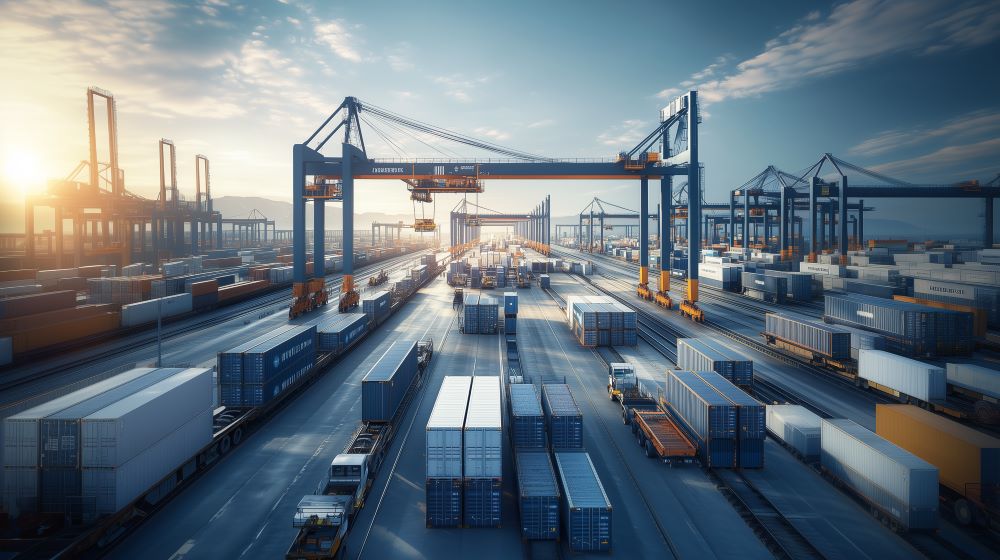- Insights & events
- Blog

Blog | April 15, 2025
A new era of international trade
New trade rules, new risks: how supply chains must adapt in 2025
For decades, global supply chains have developed in line with a free trade philosophy. Multilateral agreements and institutions such as the General Agreement on Tariffs and Trade (GATT) and the World Trade Organization (WTO) have enforced free trade.
Today’s environment is different. Geopolitical uncertainty increases supply chain risk and makes long-term decisions about network footprints a challenge. Political agendas in many leading economies prioritize protectionism and self-sustainability in the supply of certain products. Import tariffs and trade barriers are becoming an important factor in global networks.
Increasing tariffs – and supply chain risk
In response to supply shortages and delivery bottlenecks, reducing risk is becoming a major focus. The United States, for instance, has imposed export restrictions on semiconductors.
Among businesses, regional diversification and multi-sourcing strategies are gaining popularity. For example, the “China + 1” strategy is gaining traction. With this strategy, companies establish an additional source for parts procured from companies within China. Vietnam, in particular, has benefitted from this shift.
Protectionist policies are also emerging as a response to global competition. Both Europe and the United States have increased tariffs on Chinese electric vehicles. In Europe, the Carbon Border Adjustment Mechanism (CBAM) imposes import levies to account for production-related carbon emissions in the country of origin. It intends to even the playing field for European businesses in carbon-intensive industries like metals, some electricity and certain chemicals.
The trend is expected to continue – for example, US President Trump has implemented tariffs on major trade partners, including Canada, Mexico, and China, who have implemented reciprocal tariffs in response.
The impact of tariffs on supply chains


The impact of these developments varies across regions. Direct trade between the US and China fell in recent years. In 2016, it made up 3.5% of global goods trade; in 2024, it was only 2.6%. On the other hand, trade volume between China and the EU has increased by 1.3% in 2024 alone.
Companies respond to rising trade tariffs and sanctions in different ways. Some accept the additional costs and restrictions. Others try to mitigate them by adding third countries as intermediates of their trade activities.
Regardless of region or strategy, the impact of these shifting trade regulations will be felt across the supply chain. Global supply chains and large manufacturing networks such as those in high-tech or automotive will be affected. Businesses with many international partners will also need to watch new developments closely.
What’s driving regulatory shifts?
Businesses can gauge the impact of shifting trade regulations on their supply chain based on factors including:
-
The political situation in key countries
Voter behavior and government decisions are the main drivers of this trend.
-
Supply chain agility
The ability to adjust to changes in the regulatory environment can provide competitive advantages. Flexible, resilient supply chains can still reliably fulfill customer demand despite disruptions.
-
Regional differences
While the developments pose challenges for some countries, they can create opportunities for others. Economic attractiveness and political stability are key factors to determine if a country will benefit from developments like reshoring or multi-sourcing.
How to act in an unstable trade framework
Companies need to monitor global trade developments closely and assess how changes could impact their supply chains. Evaluating tariff mitigation strategies and diversifying supplier bases is essential to avoid missteps.
To support this, developing a clear strategic view of global supply chains—backed by data on tariff exposure, supplier distribution, and logistics flows—can provide valuable insights. Visual representations can enhance decision-making in strategic reviews and network planning.
Strengthening agility—particularly through end-to-end supply chain orchestration—enables businesses to gain the visibility and coordination needed to proactively adapt to shifting trade environments and regulatory disruptions.
Take a closer look at more current supply chain trends
Discover 17 top trends for logistics and supply chain management in the 4flow trend monitor
Author


Julian Schulcz
COO, 4flow






